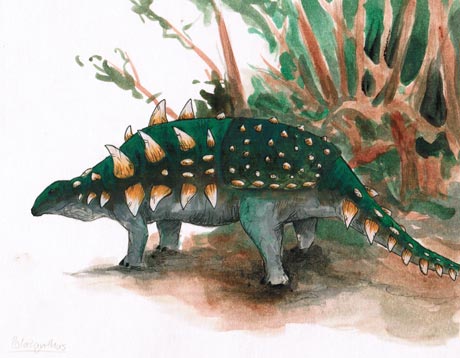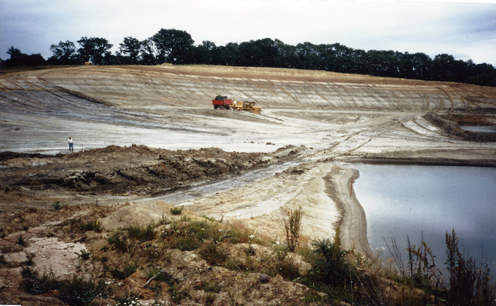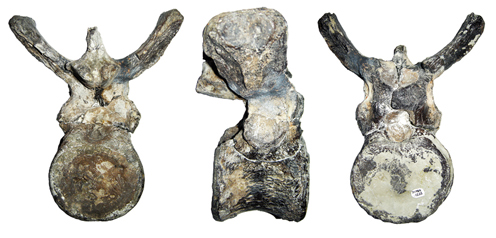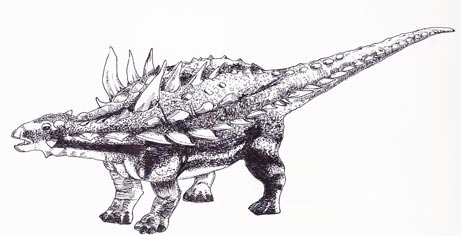A New British Dinosaur is Announced – Horshamosaurus
Many Spined Polacanthus Makeover ( Horshamosaurus)
If you ask dinosaur fans to name an English dinosaur then many will, no doubt propose Iguanodon, Megalosaurus or Baryonyx. True, these are all members of the Dinosauria clade whose fossils have been found in Britain, but examples of fossils that represent these three genera can be cited from other countries as well. For example, Iguanodon fossils are also known from Belgium, Baryonyx material has been collected in Spain and Megalosaurus has become a bit of a taxonomic waste basket for all sorts of Jurassic theropod fossils from Europe.
A New Polacanthid
We suspect that if a survey of this sort was to be conducted, there would be very few mentions of Polacanthus, a dinosaur which could, with some justification, lay claim to being truly English*. However, following a reassessment of the fossil material, one of the two species of armoured dinosaur assigned to the Polacanthus genus has been set apart and placed into its own genus. Polacanthus rudgwickensis has been placed in the newly erected genus Horshamosaurus. This latest twist in the story of Polacanthus comes almost 150 years to the day when Richard Owen first introduced the term to the wider public in an anonymously written article that appeared in the “Illustrated London News” of September 1865.
The name Polacanthus had originally been proposed the year before at a meeting of the British Association for the Advancement of Science in response to armoured dinosaur fossils discovered on the Isle of Wight.
Polacanthus and Horshamosaurus
An Illustration of Polacanthus
Picture credit: Chris
Polacanthus rudgwickensis
Polacanthus rudgwickensis was described by William T. Blows in 1996. Now retired after a long and distinguished career lecturing in the neurosciences (City University, London), a 220 page book written by William T. Blows, that provides a comprehensive account of the history of British polacanthids, has just been published by Siri Scientific Press.
The book entitled “British Polacanthid Dinosaurs – Observations on the History and Palaeontology of the UK Polacanthid Armoured Dinosaurs and their Relatives” is available at the link below:
UK Polacanthid Armoured Dinosaurs: Siri Scientific Press.
Horshamosaurus
This publication contains a complete description of the new genus and includes detailed illustrations of all the fossilised elements that have been assigned to this new genus, the very latest addition to the compendium of British dinosaurs. The Horshamosaurus material comes from exposed Lower Cretaceous Barremian Wealden deposits located at an old brickworks – Rudgwick quarry, approximately six miles west of the town of Horsham in West Sussex. The fossil material was discovered in 1985 and put on display at local Horsham Museum, where it had been labelled as a specimen of an Iguanodon.
The Location of the Fossil Finds Now Assigned to Horshamosaurus
The picture above shows the brickworks quarry at Rudgwick. The specimen of Horshamosaurus was found approximately where the man is standing (left of the photograph). The fossil material consists of one partial dorsal vertebra, a dorsal vertebra centrum, an anterior caudal vertebra, fragments of other bones from the spine, part of the left shoulder blade (scapula), with a fused coracoid fragment, pieces of rib and limb bones (part of a humerus, a nearly complete right tibia).
The Nearly Complete Dorsal Vertebra of the Specimen
One of the First Armoured Dinosaurs to be Scientifically Described
The Polacanthus genus was one of the first armoured dinosaurs to be scientifically described, it was named long before the more famous thyreophorans such as Stegosaurus and Ankylosaurus and thanks to the fossil material from the Isle of Wight and southern England, Polacanthus can be regarded very much as an English dinosaur.
*Fragmentary remains tentatively assigned to Polacanthus have been excavated from Lower Cretaceous deposits in Europe, but due to the paucity of these fossil finds and their poor state of preservation demonstrating any unique traits diagnostic for this genus (autapomorphies) has proved controversial. Perhaps the best known of all the Polacanthidae family is Gastonia (G. burgei), fossils of which come from similarly aged strata (Barremian faunal stage) found in Utah (United States).
An Illustration of Gastonia (Gastonia burgei)
Picture credit: Everything Dinosaur
All About British Polacanthids
The name Polacanthus (pronounced Pole-ah-can-thus) translates as “many or multiple spines” a reference to this quadruped’s extensive dermal armour.
For models and replicas of armoured dinosaurs and other prehistoric creatures: CollectA Age of Dinosaurs Popular Range.






